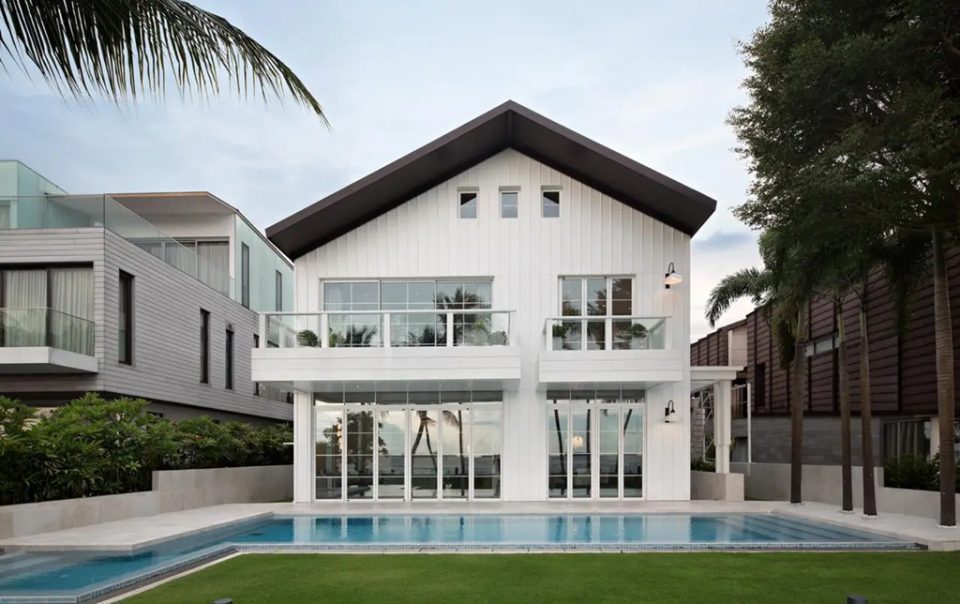Interior design for landed property in Singapore operates as more than an aesthetic choice—it functions as a complex system of social signalling, cultural preservation, and economic positioning that reveals how privilege reproduces itself across generations. Within the 2.5% of Singapore’s housing stock classified as landed property, interior design decisions become investments in social capital that extend far beyond mere comfort or beauty.
These design choices construct invisible boundaries that separate the landed property elite from the 80% of Singaporeans who inhabit public housing, creating spatial manifestations of class distinction.
The Economics of Aesthetic Choice: Investment Disguised as Decoration
The interior design market for Singapore’s landed properties operates according to economic principles that remain largely invisible to those outside this rarefied sphere. Renovation budgets that routinely exceed the median annual household income reflect not merely personal preference but strategic investments in property value and social positioning.
Consider the mathematics of landed property renovation: families regularly spend $200,000 to $500,000 on interior design projects, amounts that represent decades of savings for most Singaporean households. These expenditures purchase more than aesthetic pleasure—they buy membership in networks where business deals are negotiated, children’s educational opportunities emerge through social connections, and family wealth finds protection through community ties.
The selection of particular designers, materials, and furnishings operates as a complex signalling system:
• European designer furniture that demonstrates global sophistication and international connections
• Bespoke millwork and custom fixtures that showcase financial resources and attention to detail
• Art collections and cultural objects that signal educational background and cultural capital
• Technology integration that displays modernity whilst maintaining traditional elements
• Entertaining spaces designed to accommodate social and business networking
Cultural Preservation Through Material Choices
Within Singapore’s multicultural landscape, interior design for landed properties often serves as repositories for cultural traditions that face erosion in smaller living spaces. Peranakan families preserve heritage through intricate tile work and traditional furniture arrangements, whilst Chinese families incorporate feng shui principles that require specific spatial configurations impossible in high-rise apartments.
These design choices represent more than nostalgic preservation—they constitute active resistance to the homogenising forces of modern urban development. The ability to maintain ancestral shrines, accommodate extended family gatherings, and preserve traditional cooking practices requires both space and financial resources that landed property ownership provides.
The Social Architecture of Domestic Space
Interior design decisions within landed properties construct social relationships in ways that extend beyond the immediate household. The allocation of space—who receives the largest bedroom, where elderly parents are accommodated, how domestic workers’ quarters are configured—reflects and reinforces family hierarchies whilst accommodating Singapore’s distinctive multigenerational living patterns.
The design of entertaining spaces reveals particularly complex social dynamics. Formal dining rooms that can accommodate business associates operate differently from family areas designed for daily life, whilst outdoor spaces create opportunities for community engagement that high-rise living rarely permits.
As one Singapore-based interior designer recently observed: “When we design landed property interiors, we’re not just arranging furniture—we’re creating stages for social performance, where families demonstrate their values, preserve their heritage, and signal their position within Singapore’s complex social hierarchy.”
Domestic Labour and Spatial Hierarchy
The interior design of Singapore’s landed properties inevitably incorporates spaces for domestic workers—typically foreign women whose labour enables the lifestyle that such properties represent. The design and location of domestic workers’ quarters, service areas, and circulation patterns reveal the spatial logic of class distinction operating within individual homes.
These design decisions reflect broader patterns of labour exploitation and social hierarchy that characterise Singapore’s economy. The ability to maintain elaborate interior designs often depends upon invisible domestic labour that enables leisured lifestyle maintenance whilst remaining spatially segregated from family areas.
Environmental Privilege and Sustainable Aesthetics
Increasingly, interior design for landed properties incorporates environmental considerations that reflect both global consciousness and local adaptation. Solar installations, rainwater harvesting systems, and sustainable material choices represent luxury environmentalism that remains inaccessible to most Singaporean households.
The Inheritance of Design: Reproducing Advantage Across Generations
Perhaps most significantly, interior design investments within landed properties operate as mechanisms for transmitting advantage across generations. Children who grow up surrounded by art, books, and carefully curated environments acquire cultural capital that translates into educational and professional opportunities throughout their lives.
The aesthetic sophistication, global awareness, and social confidence that emerge from inhabiting thoughtfully designed spaces provide advantages that extend far beyond property value. These environmental influences shape cognitive development, social skills, and cultural competency in ways that reproduce privilege across generations.
The spatial segregation between Singapore’s landed property elite and public housing residents creates vastly different environmental contexts for childhood development, with long-term implications for social mobility and economic opportunity.
Conclusion: Design as Social Infrastructure
The interior design choices made within Singapore’s landed properties reveal the complex mechanisms through which spatial privilege operates in contemporary urban societies. These decisions, whilst often presented as personal aesthetic preferences, function as investments in social capital, cultural preservation, and intergenerational advantage that extend far beyond individual households.
Understanding these patterns requires recognising interior design not as mere decoration but as a social infrastructure that shapes community relationships, reproduces cultural values, and maintains economic hierarchies. The families who invest in thoughtful interior design today participate in systems of privilege that influence educational opportunities, business networks, and social mobility for generations to come, making each design decision a crucial element in the broader architecture of interior design for landed property in Singapore.

